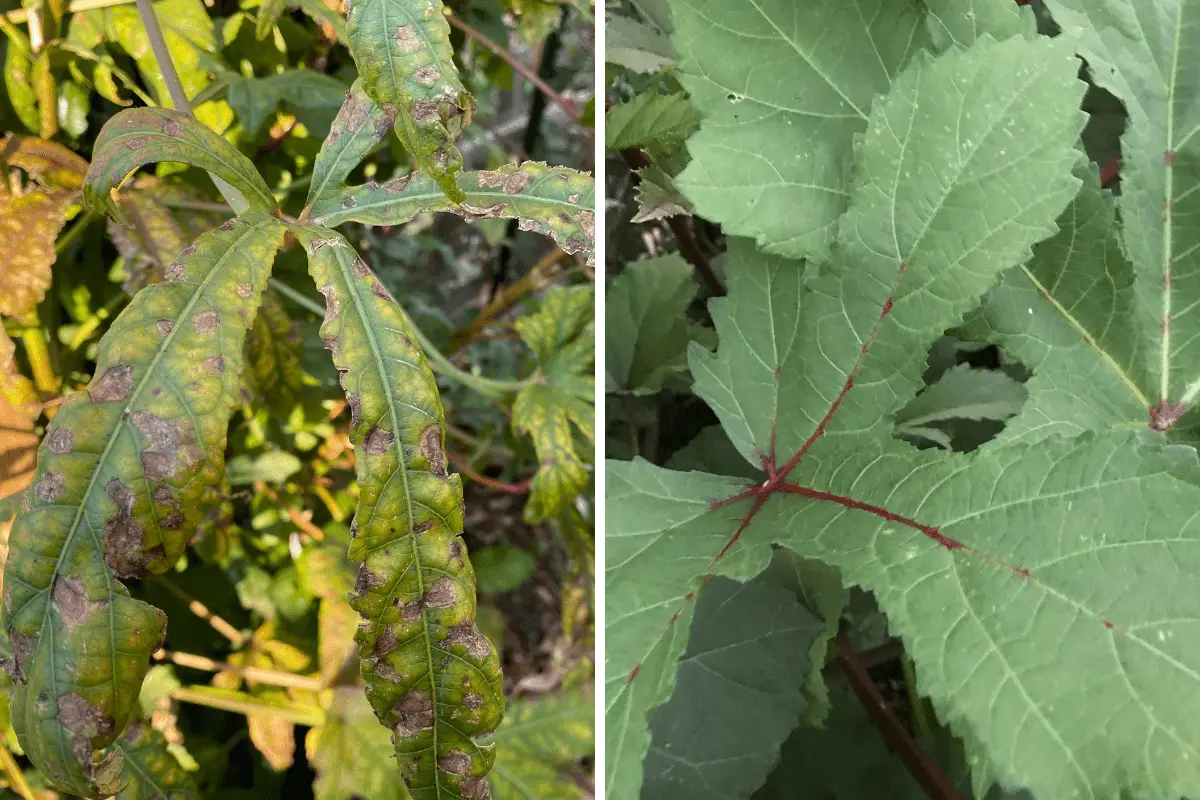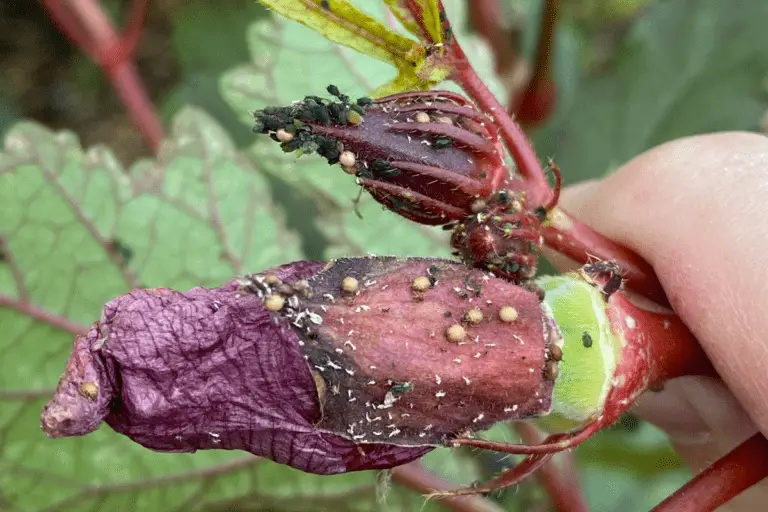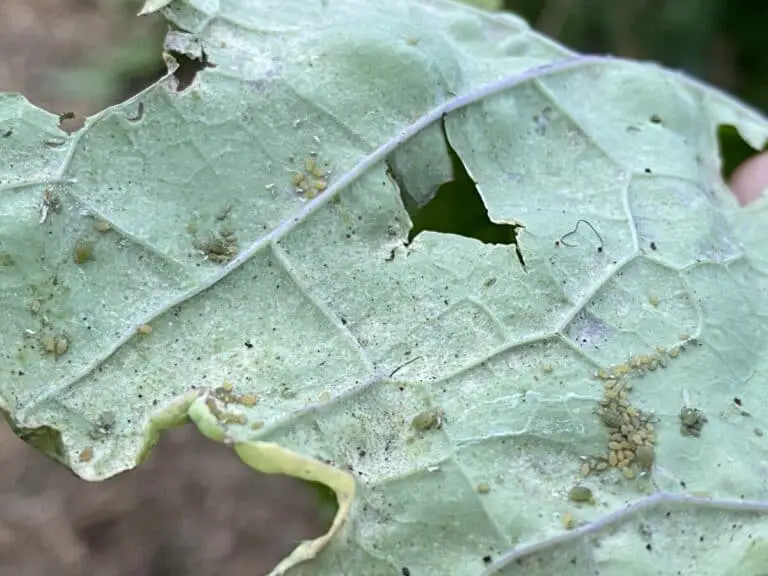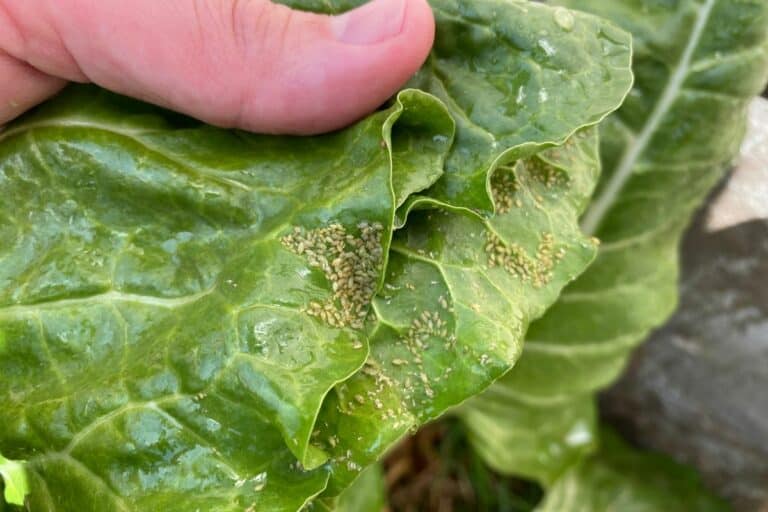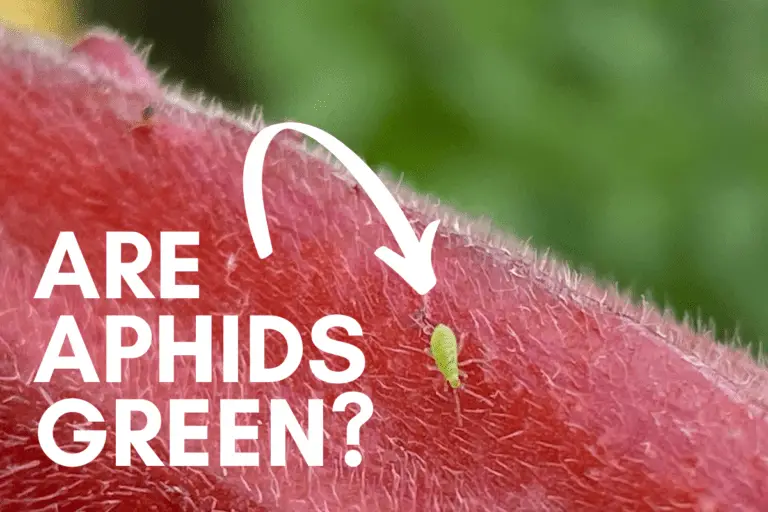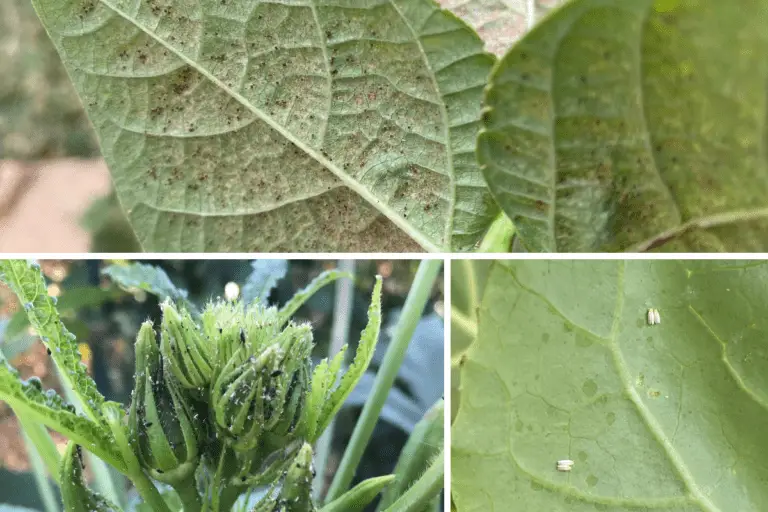Can Plants Recover from Aphids? Tips to Help Plants Thrive
A while back, I admittedly didn’t pay close enough attention to my okra during the hot summer months here in Texas, and aphids invaded. By the time I got my act together, they were clustering around my okra blooms, damaging the foliage, disfiguring the okra pods, and spreading to other parts of my garden.
The infestation was so bad that I started wondering, “Can my plants survive aphids?” Here’s what I learned:
Plants can easily recover from aphids if there’s time left in the season for further growth to take place and if effective treatment methods are applied in a consistent, timely manner. Removing damaged foliage and fruit and properly fertilizing affected plants can speed along the recovery process.
One of the key factors that will influence whether or not your plants will survive an aphid infestation is how you react once you recognize the infestation and realize the danger it poses to your plants.
Like most things with gardening, timing is key. If you notice aphids and pay no attention to them at first, you might be okay. I’ve had plenty of plants that recovered just fine once I started treating the aphid problem.
But with my okra, I wasn’t as fortunate. By the time I finally got things under control, August had turned into September, and there wasn’t enough warm weather left in the season for my okra to recover and return to normal, so I just pulled them.
Thankfully for me, my okra harvest that year was still a decent one, but it would have been even better if I had acted sooner.
With that in mind, I thought I’d share the methods I’ve used to help my plants recover from aphids as well as helpful information related to the kinds of damage that aphids can do to your plants and property.
5 Ways to Help Plants Recover from Aphids
Here are five thing you should do if aphids have arrived in your garden:
1. Treat Quickly and Continuously
This is key to quick plant recovery. It’s tempting to ignore aphids sometimes. Unlike spider mites, they don’t cause immediate, catastrophic damage to plants. But they can grow in numbers quickly and thus need to be addressed.
In articles I’ve written on black aphids, green aphids, white aphids, red aphids, and yellow aphids, I’ve explored, to varying degrees, a range of approaches you can take to treat aphids quickly. My personal favorites, as you’ll discover if you read those articles, happen to be neem oil and insecticidal soap sprays, although there are plenty of other natural ways to get rid of aphids.
For an in-depth overview, check out my article on using neem oil. I wrote that article in relation to spider mite infestations, but it applies to aphids as well.
2. Assess the Damage
Once you’ve begun treating your aphid infestation, and especially once you’ve taken care of your problem and no longer see any aphids, your goal is to assess the extent of the damage.
In my article on whether or not to throw away aphid-infested plants, I laid out a framework for handling aphid infestations and the damage they cause to plants.
Simply put, if your plant has suffered minor or moderate damage–typically discolored or decayed foliage or evidence of sooty mold–you can easily nurse the plant back to health.
But if the damage is major or severe, you’ll need to make a determination about whether it’s worth the time and effort to help the plant recover or whether you should simply compost or trash the plant and put that space in your garden to better use.
3. Dispose of Damaged Vegetation
Much like other sap-sucking pests–such as spider mites, which I consider my personal gardening nemeses–aphids will damage plant vegetation, particularly leaves. You’ll typically notice yellow blotches at first, which will eventually turn brown as the foliage decays.
Damaged vegetation does your plant no good, and it provides cover for other pests who might wish to take advantage of an unwell plant.
What I’d recommend is this: Remove all vegetation that is moderately to heavily damaged, pruning damaged leaves in particular since garden pests often seek refuge on the undersides of leaves. I wouldn’t remove more than 80% of the plant’s foliage at once, but I’ve done so on rare occasions (with tomatoes, peppers, and okra alike), and I’ve seen plants recover from such heavy pruning.
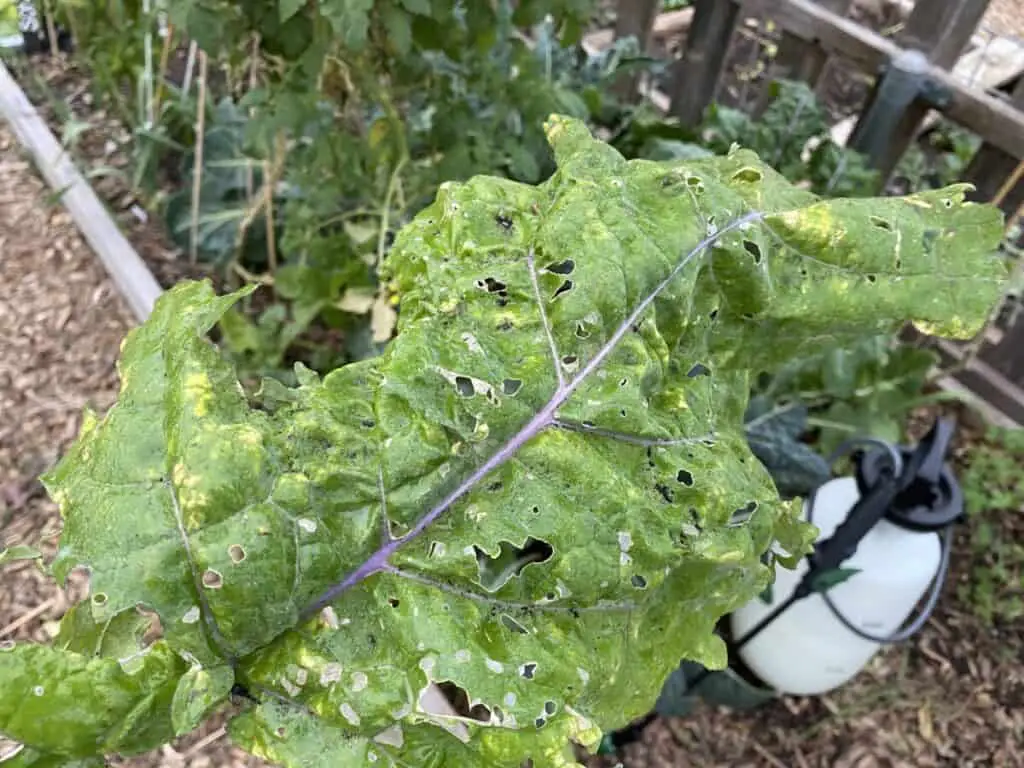
If it’s a choice between heavy pruning and pulling up the plant entirely, you might as well give heavy pruning a chance. Who knows! You might be able to nurse your plant back to health after all.
But if the plant is too far gone or if it’s too late in the season, it’s best to just throw it away in either the trash or compost bin. At that point, heavy pruning won’t do much of anything. You might as well replace your heavily damaged plant with something else.
4. Treat Mold Problems
Sooty mold is a dark-colored fungus that’s typically brought on by the sugary honeydew that aphids secrete and deposit on plants. The problem with sooty mold is that it can coat too much of the plant’s surface, interfering with photosynthetic processes and thus inhibiting the plant’s normal growth patterns.
But if you followed my advice above and removed damaged vegetation from your plant, you’ve already taken an important step toward offsetting the effects of mold. For any remaining mold, you can try spraying the plant with water using a water hose and strong water pressure.
You can even spray the plant’s foliage with insecticidal soap an hour or two beforehand, which can soften up the fungus and make it easier to remove when you spray the plant with water from your hose.
I prefer to err on the strong side with my insecticidal soap sprays, so I use a 1-gallon or 2-gallon sprayer and add 2 tablespoons of an organic liquid soap per gallon of water, then shake thoroughly. Just be sure to add the water first, then the soap, to avoid lots of foamy residue.
If you’re using a 16-ounce spray bottle instead of a 1- or 2-gallon sprayer, simply add ¾ teaspoon of liquid soap, and you’re good to go.
These are my personal favorites when it comes to garden-safe liquid soaps:
- Dr. Bronner’s Pure Castile Liquid Soap, Peppermint
- Mrs. Meyer’s Liquid Dish Soap, Basil
- Safe Brand Insect Killing Soap
5. Strengthen Plants’ Natural Defenses
The key to plant recovery is plant health, so once you’ve rid your garden of aphids–and followed the steps noted above–your next goal is to ensure that your damaged plants are set on the road to a full recovery. You can do this by adding an application of all-natural fertilizer to your watering regimen. These will help the plant gain the strength it needs to recover from an aphid infestation.
Much about fertilization depends on your local environment, the kinds of plants you’re growing, and the quality of your soil. But in general, I’ve had a lot of success with two products:
Garrett Juice
This recipe was created by a man named Howard Garrett, and it includes the following ingredients: water, compost tea, liquid seaweed, liquid molasses, and apple cider vinegar. Many people don’t have the ability, time, or inclination to make their own compost tea, but there are two ready-made products available for purchase: Medina Garrett Juice Plus and Maestro Garrett Juice Pro.
When sprayed directly on foliage, Garret Juice will not only assist in killing off garden pests. It’ll also be absorbed through the plant’s leaves, providing a boost of nutrients to encourage further growth.
Fish Emulsion
To be honest, this stuff smells gross, so don’t ever handle it inside your house or garage. But fish emulsion is great for fertilization, and it typically doesn’t cause any plant burn (even if you accidentally overdo it a bit), unlike many other plant fertilizers.
Most fish emulsion liquids have a 5-1-1 NPK ratio, which means that they are 5 parts nitrogen (N) to 1 part phosphorus (P) and 1 part potassium (K). If aphids have damaged your foliage, your plant needs nitrogen to recover quickly and produce new leaves, so fish emulsion is my go-to fertilizer in such instances.
Simply add 2 tablespoons of fish emulsion to a watering can. There’s no need to spray fish emulsion directly on the plants.
Are Aphids Bad for Plants?
I used to take aphids for granted, but I don’t anymore because I’ve seen the slow-rolling damage they can do to plants.
Aphids can be very bad for plants. They’ll pierce plants’ epidermal layers to suck out their organic nutrients, and they’ll secrete a sugary substance called honeydew, which attracts ants and encourages the growth of sooty mold. They’re also responsible for transmitting hundreds of plant diseases.
Let’s take a quick look at each of the ways that aphids can damage your plants:
Sucking Sap
Aphids have piercing mouthparts known as stylets, and they’ll use these to puncture the plant’s tissue and seek out its phloem cells, which are special cells that the plant uses to transport nutrients. Once aphids have found the phloem cells, they’ll slowly drain the plant of its sap, causing foliage discoloration and decay.
Honeydew
I normally don’t mind ants in my garden, but if I see ants around aphids, I know I’ve got a problem. Ants love the sugary honeydew produced by aphids, and they’ll do whatever it takes to continue feasting on it, including killing off beneficial insects (such as ladybugs, lacewing larvae, and parasitic wasps) that would have otherwise helped rid your garden of aphids. Honeydew also contributes to the rise of sooty mold, so it has the ability to cause multiple problems.
Damaged Fruit
Most people equate aphid infestations with foliage damage, but I’ve seen them damage fruit as well. After aphids infested my okra plants, I noticed that they were damaging the okra pods too. Okra is an incredibly fast growing plant, so whenever an aphid punctured the pod with its stylet, a small bump formed at the site of the damaged area.
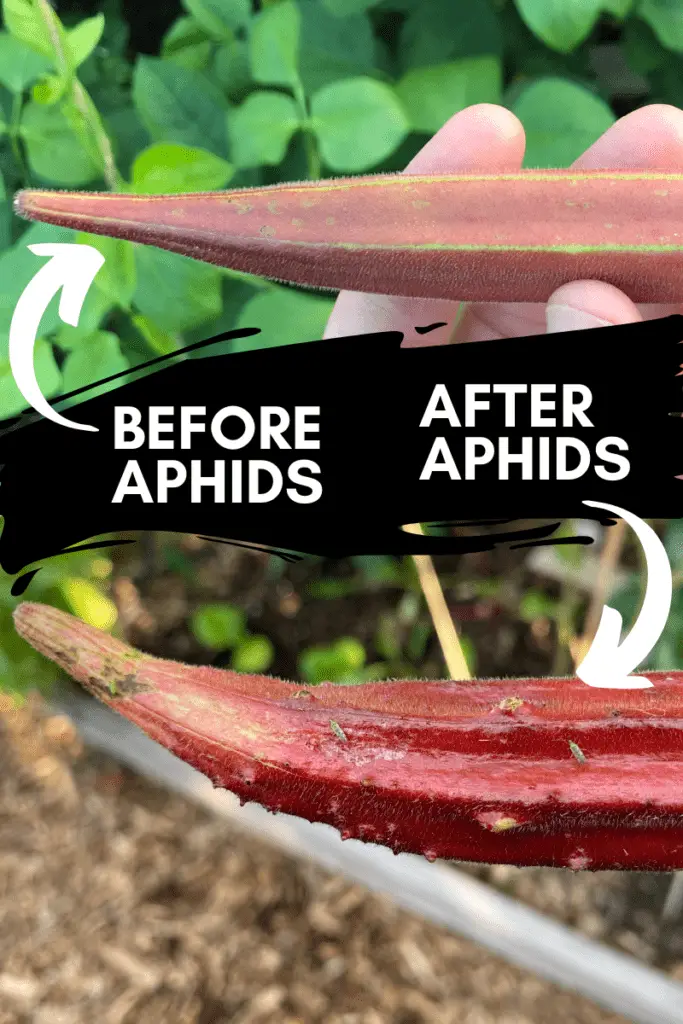
Lucky for me, this didn’t affect the flavor, but it did leave an unsightly appearance on most of my okra.
Disease Transmission
Aphids have been known to spread all kinds of disease across the world. In fact, a single aphid species (the green peach aphid) has been shown to spread at least 100 viruses. In other words, aphids might not cause immediate, catastrophic damage to your garden, but if you don’t take care of the problem, who knows what kinds of disease they might be spreading among your plants.
Reproduction and Overwintering
I mention reproduction and overwintering here because aphids are great at both, and if you allow them to remain in your garden, their ability to reproduce, migrate, and overwinter will be bad for your plants next year.
I’ve written in great detail about where aphids come from and how they reproduce. It’s both fascinating and, from a gardener’s perspective, disturbing as well.
The key to keeping aphids out of your garden is to keep them from reproducing and laying eggs, so act quickly once you see them or else you’ll likely be seeing them next year as well.
